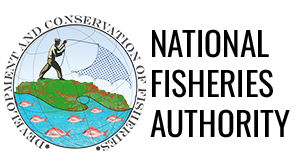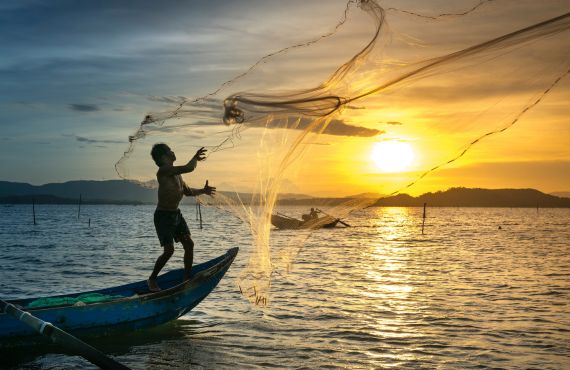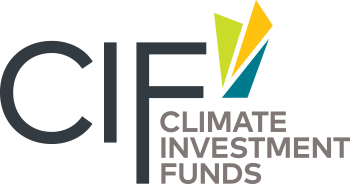Strategic Objectives 2024-2027
- To increase the area of sanctuary cover of our coastal fisheries waters to 20,000 hectares by 2027
- To increase the number of fisheries being managed through fishery and aquaculture management plans, from 2 to 10 by 2027.
- To explore Blue Economy opportunities through the introduction of climate smart technologies and alternative livelihoods in fisheries by implementing 2 pilot programmes by 2027: Offshore fishing for Pelagics using small-scale long lines and increased production of Irish Moss through farming technologies.
What We Do
- Registration and Licensing of fishers and fish farmers
- Licensing of fishing vessels and aquaculture facilities
- Provide extension services to fish farmers and fishers
- Training of fish farmers in aquaculture technologies
- Training of fishers in fishing technologies including the use of longlines and Fish Aggregating Devices
- Training of fishers in Oyster and Irish Moss farming
- Permits for importation of live aquatic flora and fauna
- Recommendations for concessions on duties and taxes for the importation of fishing equipment, related materials and fish feed.
- Fisheries and Aquaculture research and development
- Fisheries management and conservation including establishment of Fish Sanctuaries
- Fisheries and Aquaculture monitoring, compliance and enforcement
- Reporting on fisheries sector performance and statistics
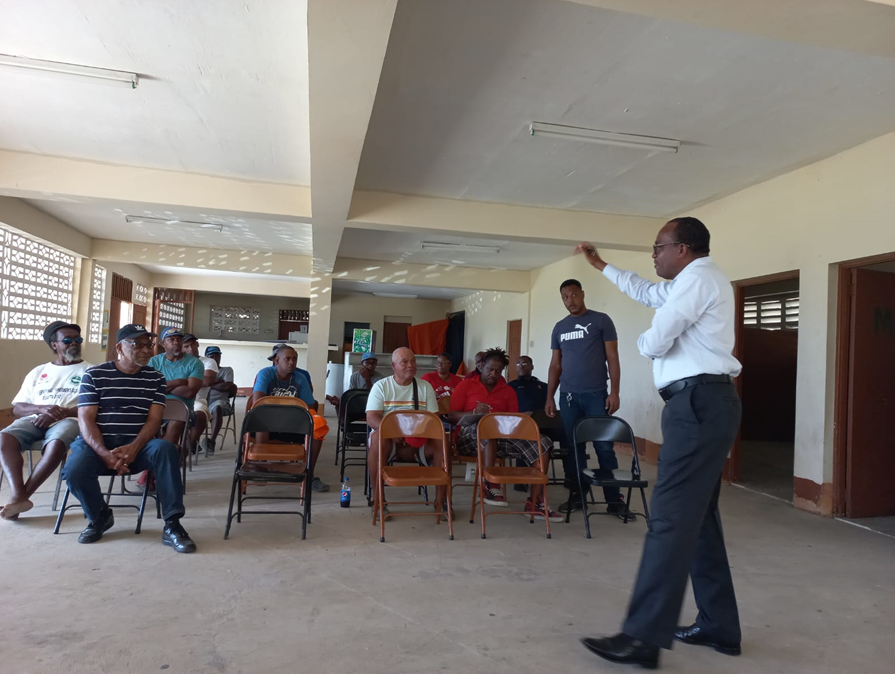
Extension Services Branch
The extension services of the National Fisheries Authority play a crucial role in promoting sustainable practices, improving livelihoods, promoting alternative livelihoods, and ensuring the long-term viability of the fisheries sector. The Branch is headed by the Senior Director of Capture Fisheries, Extension Services, and supervises, three (3) Regional Fisheries Extension officers and eight (8) Fisheries Extension Officers operating from of fourteen (14) Fisheries sub-stations offices islandwide. The extension services of the National Fisheries Authority typically involve various activities aimed at supporting and educating stakeholders within the fisheries sector.
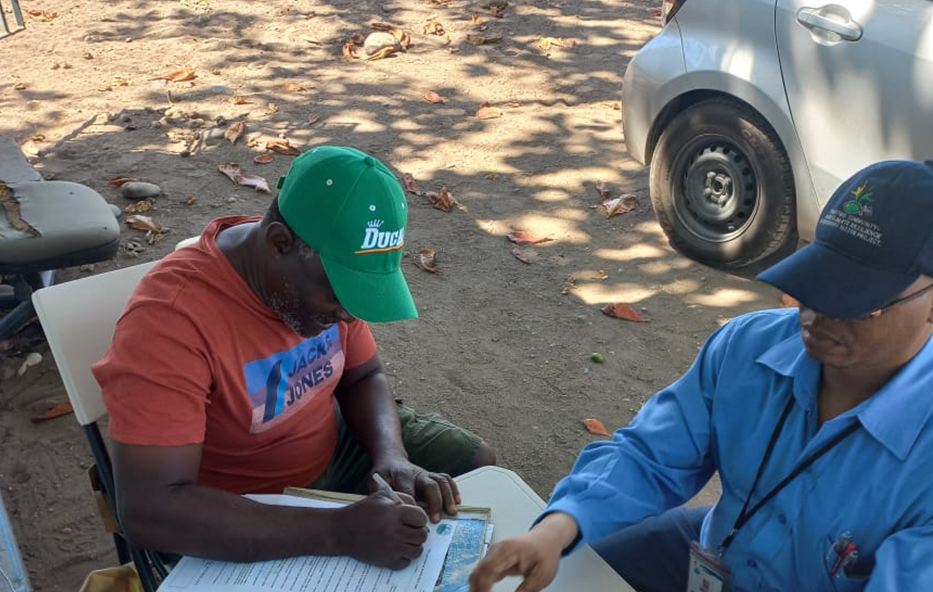
These services may include:
- Facilitate stakeholder participation in Fisheries Management and Sustainable Development
- Transfer of Gear Technologies and Introduction of new technologies
- Participation and formation of fisherfolk groups
- Licensing and registration of fishers and fishing vessels
- Information Dissemination
- Advisory Services
- Data Collection
- Monitoring and Evaluation
- Education, Training and Capacity Building
Structure:
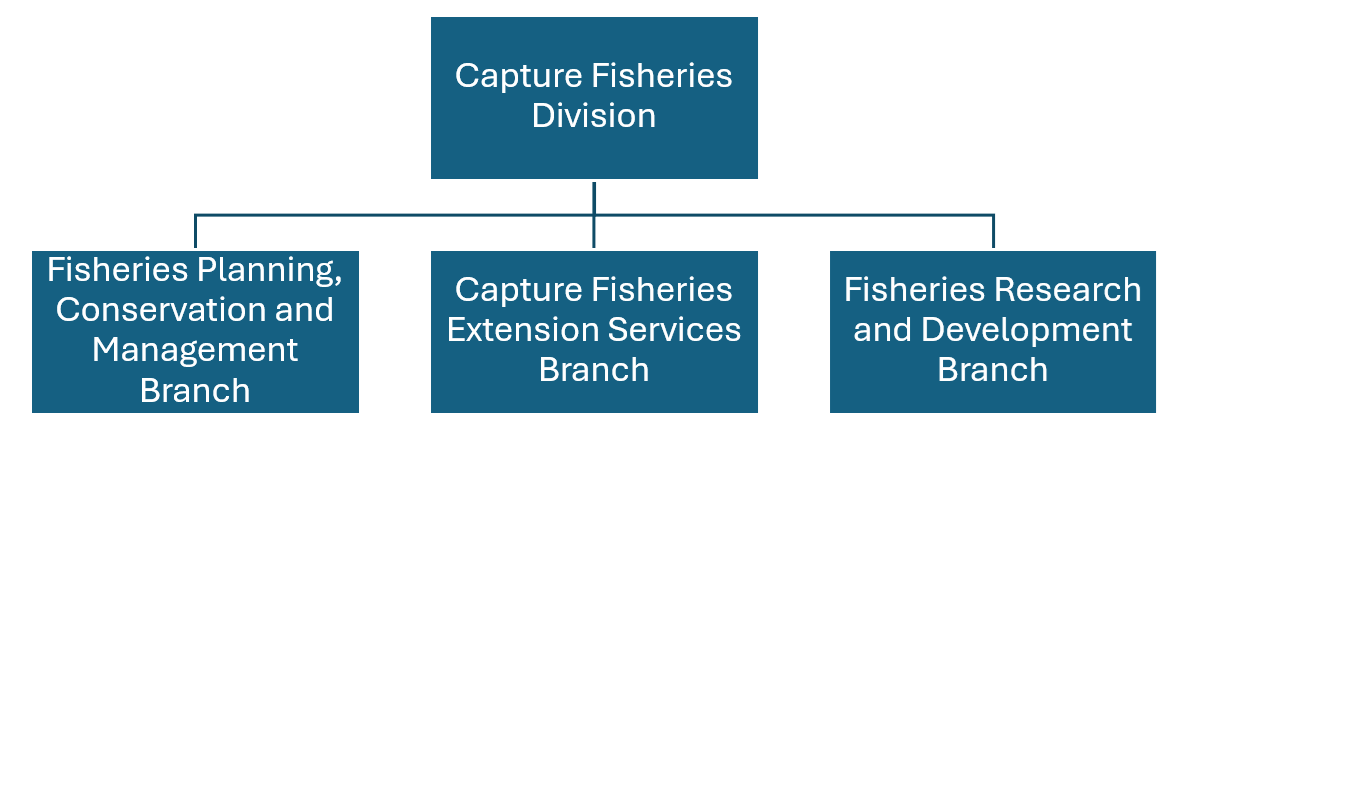
Locations:
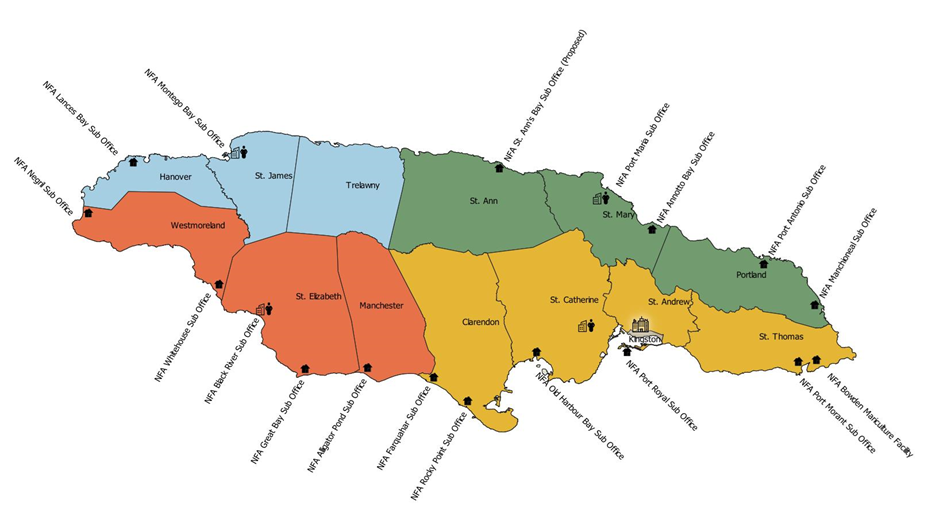
Special Fishery Conservation Areas are no-fishing zones reserved for the reproduction of fish populations. Their nature reserve statuses are declared by the Agriculture Minister under Orders privileged through Section 18 of the Fishing Industry Act of 1975. It is, therefore, illegal and punishable by law to engage in any unauthorized fishing activities in the demarcated zones. Bogue Island Lagoon, Montego Bay and Bowen Inner Harbour, St Thomas, were the first two SFCA’s to be declared.
Benefits of the Special Fishery Conservation Areas
The special fishery conservation areas are anticipated to gradually increase fish populations affected by overfishing, habitat degradation and land-based nonpoint-source pollution, among other stressors. SFCA establishment has been scientifically proven to improve fish stocks by 3 to 21 times it original biomass.
Furthermore, due to the ‘spill over’ effect, adjacent marine areas benefit as excess fish from the reserves will migrate into these areas where fishing is allowed. The SFCA’s will also maintain genetic diversity of marine species within Jamaica’s water – reducing the probability of extinction. The habitats provide the marine species the opportunity to reach full sexual maturity therefore increasing their egg producing/spawning potential and survival of the species overall.
SFCA’s also offer socio-economic benefits, in terms of:
- Improving economic opportunities for fishers as the catch per unit effort for fishermen should increase within the areas surrounding the reserves
- Increased opportunities for eco-tourism, allowing visitors and citizens to view our tropical fish species in their natural environment
- Providing environments for further research and development initiatives
